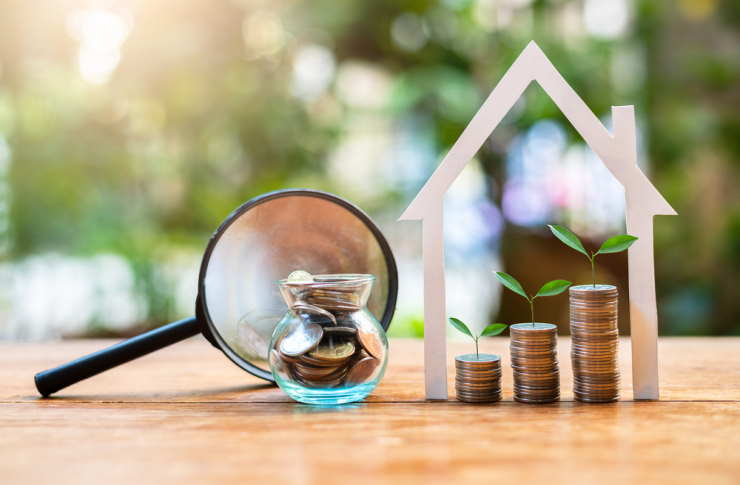Assessing Home Value: A Practical Guide to Property Worth
Discover what truly determines a home's value and how to evaluate it with confidence. This in-depth guide covers location effects, which renovations add the most value, key valuation methods like CMA and appraisals, and external market forces. Learn actionable steps to preserve and increase property value while staying informed on market trends, real estate appraisal practices, and investment considerations.

Understanding what drives a property’s market value helps homeowners, buyers, and sellers make smarter financial choices. Home value goes beyond a listing price; it reflects location, condition, market forces, and future prospects. This guide breaks down the principal influences on property worth and explains practical ways to estimate and protect that value over time.
How location shapes property value
Location is often the single most influential component of home value. Neighborhood safety, school quality, access to public transit, shopping, and employment centers directly affect demand and, therefore, prices. Proximity to parks and amenities or the absence of nuisances such as heavy traffic or industrial activity can create premium value.
Beyond current features, planned infrastructure and zoning decisions also matter. New transit lines, commercial developments, or rezoning can increase desirability and appreciation potential. Conversely, proposed highways or large-scale industrial projects can dampen demand. For long-term owners and investors, researching municipal plans and neighborhood trends is essential to anticipate value shifts.
Which improvements give the best returns?
Not all renovations add equal value. Projects that modernize kitchens and bathrooms typically produce some of the highest returns, because buyers prioritize functional, attractive spaces. Upgrading essential systems — heating, ventilation, air conditioning, roofing, and plumbing — preserves usability and prevents depreciative issues that drive down offers.
Curb appeal also matters: landscaping, exterior paint, and clean entryways create better first impressions and can justify higher asking prices. That said, over-improving a property relative to neighborhood norms can limit returns. Spending heavily on luxury features in an otherwise modest area may not attract buyers willing to pay a premium. Focus on upgrades that align with local market expectations when aiming for strong ROI.
Valuation methods at a glance
| Valuation Method | What it is | Best used for |
|---|---|---|
| Comparative Market Analysis (CMA) | Compares recently sold similar properties to estimate current market value | Quick, real-world market snapshots for listing or buying decisions |
| Professional Appraisal | Licensed appraiser inspects the property and applies recognized valuation approaches | Mortgage underwriting, legal disputes, and formal lending requirements |
| Automated Valuation Models (AVMs) | Algorithmic estimates using public records and recent sales data | Fast, general value ranges for initial research |
| Cost Approach | Estimates replacement cost minus depreciation to determine value | New builds or unique properties with few comparables |
Prices, rates, or cost estimates mentioned in this article are based on the latest available information but may change over time. Independent research is advised before making financial decisions.
How wider economic and environmental factors influence prices
Real estate doesn’t exist in a vacuum. Macroeconomic conditions, especially interest rates, strongly affect buyer affordability and demand. Lower mortgage rates usually expand buying power and push prices up; higher rates can cool activity. Employment trends, population growth, and local economic health also play key roles — areas with expanding job markets typically experience stronger price appreciation.
Environmental and climate-related risks are increasingly relevant. Properties in flood zones, wildfire-prone regions, or areas with other hazards often face higher insurance costs and may see constrained demand. Conversely, investments in resiliency, such as flood mitigation or energy-efficient upgrades, can protect value and appeal to risk-aware buyers.
Ongoing maintenance and strategies to preserve value
Regular upkeep prevents small problems from becoming costly repairs and helps maintain marketability. Simple habits — scheduled servicing of HVAC systems, timely roof repairs, and addressing moisture or pest issues — preserve both function and resale appeal. Updating finishes and appliances gradually keeps a home from feeling dated without requiring full-scale renovations.
When planning improvements, prioritize projects with broad buyer appeal and those that resolve deferred maintenance. Monitor sales in your neighborhood to understand which features prospective buyers value and tailor upgrades accordingly. Keeping a detailed maintenance log and receipts for work done can also be helpful during valuation or sale negotiations.
Putting the pieces together: measuring and monitoring your home’s worth
To arrive at an accurate assessment, combine several valuation methods. Start with automated tools or a CMA to establish a baseline, then consider a professional appraisal if you need an authoritative figure for financing or legal reasons. Factor in local market trends and upcoming municipal changes to account for near-term shifts.
Stay informed by tracking comparable sales, inventory levels, and mortgage rate movements. For owners planning to sell, timing improvements to match market conditions — and ensuring upgrades are in line with neighborhood standards — can maximize returns. For buyers, understanding these same factors helps identify properties with upside potential and avoid overpaying.
Accurately gauging home value takes a holistic view: location, condition, market dynamics, and external risks all interact. With thoughtful maintenance, targeted upgrades, and a mix of valuation techniques, homeowners can protect and grow their property’s value while making better-informed real estate decisions.






